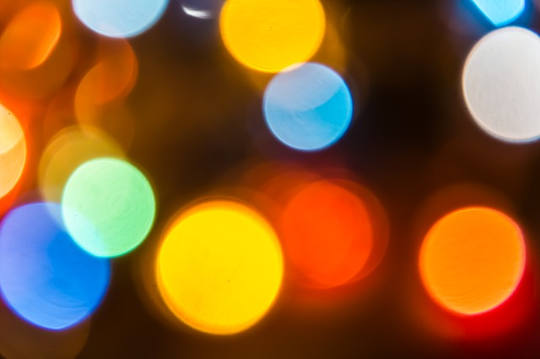
I notice that my office is mainly colourless, or perhaps more accurately insipid in colour, a dull brown, the colour of old tea – the desk, the shelves, the table. A once bright red bromeliad now dead or dying on the window sill has turned a dull autumn brown. Beyond that, outside the window, is the dull brown of autumn on a wet, windy day.
One object stands out: the bright red university diary. It’s the first thing that I notice when I enter the room. It draws my eyes to it involuntarily, like a red traffic light or the red marks on an essay. I go to reach for it but pause: perhaps it’s the week ahead that I can’t cope with, the new term, the tutorials, the lectures, the meetings, the grant application deadlines, the proofs of my new book. Surely it’s not the colour of the object itself, the red cover that is a non-conscious warning for me to stop?
A great deal has been written over the years about the effects of colour on human psychology, and this has been carried into the popular imagination in various ways, from guidelines on how to decorate your house to ensure a calm and peaceful space, to how to attract a partner, or even win at sport.
The appeal of colour
Some of the earliest applied research into colour was carried out by Louis Cheskin at the Color Research Institute of America founded in the 1930s. A pioneer in the field of marketing psychology, Cheskin argued that consumers make automatic and non-conscious assessments of products based not just on the product itself but derived from all its characteristics as determined by each of the senses. One major sensory feature is colour. These non-conscious sensory impressions from the product or its packaging, Cheskin argued, can be transferred directly onto our perception of the product itself, including its perceived value, price and quality.
In one study, outlined in Vance Packard’s 1957 classic The Hidden Persuaders, housewives tried out three different detergents in packaging that was either yellow, blue, or blue with a splash of yellow. The verdict was that the detergent in the yellow box was too harsh for their clothes (“It ruined them”, many of the respondents complained), whereas the detergent in the blue box was considered not strong enough, leaving the clothes still dirty. The detergent in the packaging coloured blue with splashes of yellow was “just right”. The detergent was, however, identical in all three. It seems that non-conscious associations, manipulated by the marketer, could determine our preferences.
Packard also described how changing the colour of the 7-Up can, with a 15% increase in the amount of yellow on the can but no alteration to the drink itself, led to complaints that the flavour had become “too lemony”, the consumers having been non-consciously primed with the lemon association through the yellow on the can. This research questioned the model of consumers as rational agents, and started to delve more deeply into how the human mind works. But this was science driven by profit.
Wear red, get noticed
Contemporary psychological research seems to support some of these ideas about the effects of colour on perception. In a 2008 study by Andrew Elliot and Daniela Niesta from the University of Rochester, men rated pictures of women as “more attractive” and “more sexually desirable” when the photos were presented for only a few seconds on a red rather than a white background. However, it didn’t affect women’s perceptions of the attractiveness of other women, nor whether men saw the women in the pictures as “likeable”, “kind” or “intelligent”. They concluded:
Human and nonhuman male primates respond to red … As much as men might like to think that they respond to women in a thoughtful, sophisticated manner, it appears that at least to some degree, their preferences and predilections, are, in a word, primitive.
Some have taken these kinds of results to suggest that women (and men) should exploit the unconscious in subtle ways to make themselves more attractive to the opposite sex – but it is the subtle red watch strap rather than the red dress that the study suggests would be most effective.
The colour red, is also an evolutionarily-evolved sign of dominance among males in the animal kingdom, which appears also to have effects in humans. A study by Russell Hill and Robert Barton from the University of Durham found that sports teams that wore red kits were more likely to win than those that did not.
Nature’s warning
But, of course, dominance and sex are not the only biological and symbolic associations of the colour red. Red is also associated with danger and warning. Another study by Andrew Elliott and colleagues outlined the effects of the colour red on children’s test performance. They found that when children were left to solve anagrams for five minutes, if their participant number was written in red they solved on average less than 4.5, but when their number was written in green or black, they solved on average more than 5.5. They also examined the effects of altering the colour of the cover of an IQ test booklet, finding that when the cover was red the children performed less well.
Subsequent measures of brain activity using EEG scans revealed that those working with a red-covered booklet showed relatively more right frontal lobe activation than those with green or grey test covers. According to the researchers, this sort of activity is associated with avoidance behaviour. They concluded:
The findings suggest that care must be taken in how red is used in achievement contexts and illustrate how colour can act as a subtle environmental cue that has important influences on behaviour.
The Nobel Laureate Daniel Kahneman reinforced a lot of these findings in his best-selling book Thinking Fast and Slow, in which he delineated two systems of thinking: one fast, automatic and non-conscious, the other slow, deliberate and conscious. Colour affects our fast, non-conscious thinking in ways that we are only now starting to understand, with potentially broad implications for education, sport, and all manner of human relations.
![]() Does Manchester United’s home football strip (red) give them an unfair advantage? Some psychologists would no doubt say yes, although this is contested. Is my red diary warning me off, or am I just overworked? I am of course an entirely rational man, but I notice that I’ve chosen a blue diary for next year.
Does Manchester United’s home football strip (red) give them an unfair advantage? Some psychologists would no doubt say yes, although this is contested. Is my red diary warning me off, or am I just overworked? I am of course an entirely rational man, but I notice that I’ve chosen a blue diary for next year.
About the Author
Geoff Beattie, Professor of Psychology, Edge Hill University
This article was originally published on The Conversation. Read the original article.
Books by this Author
at InnerSelf Market and Amazon


























